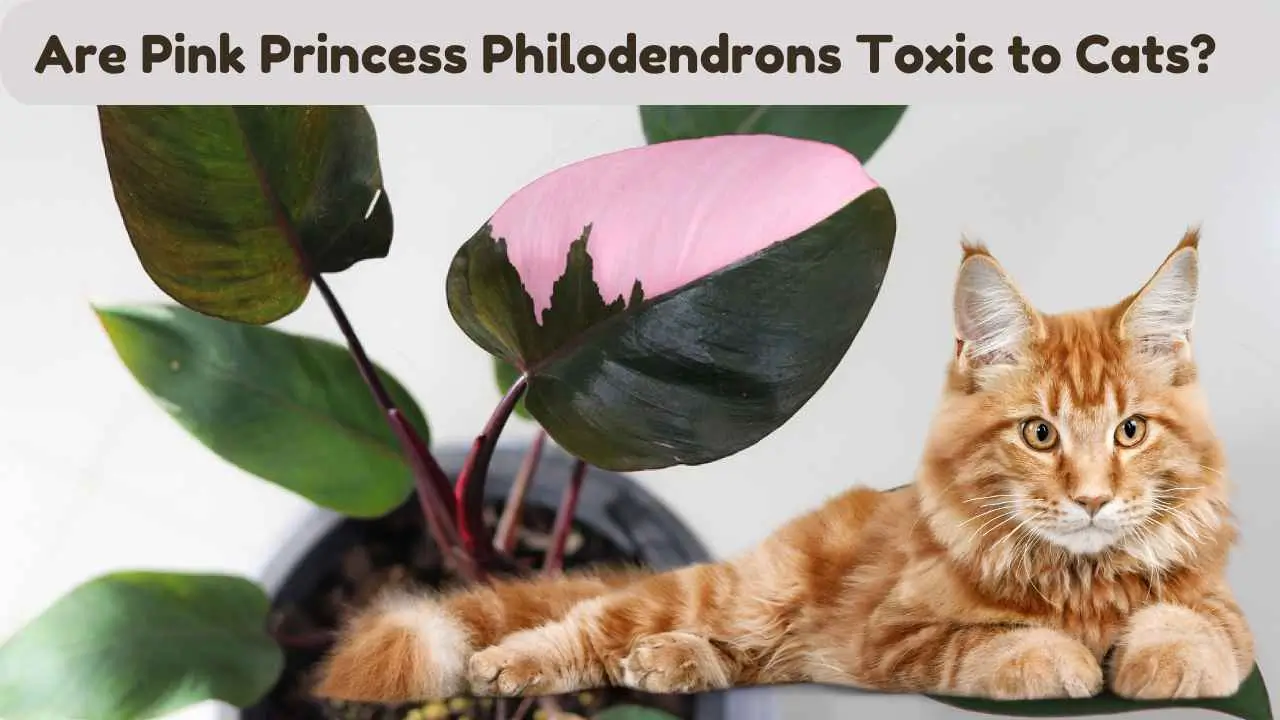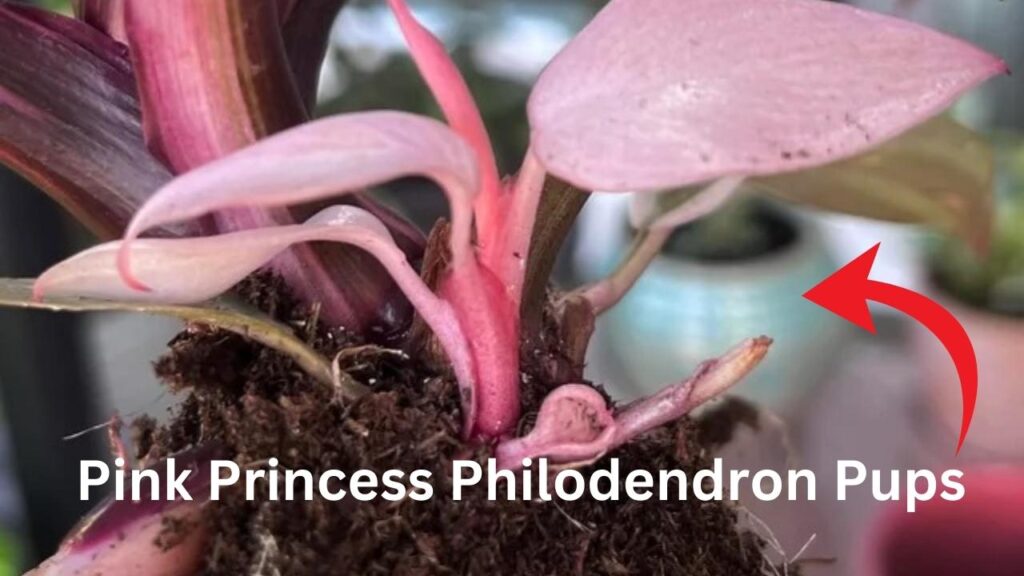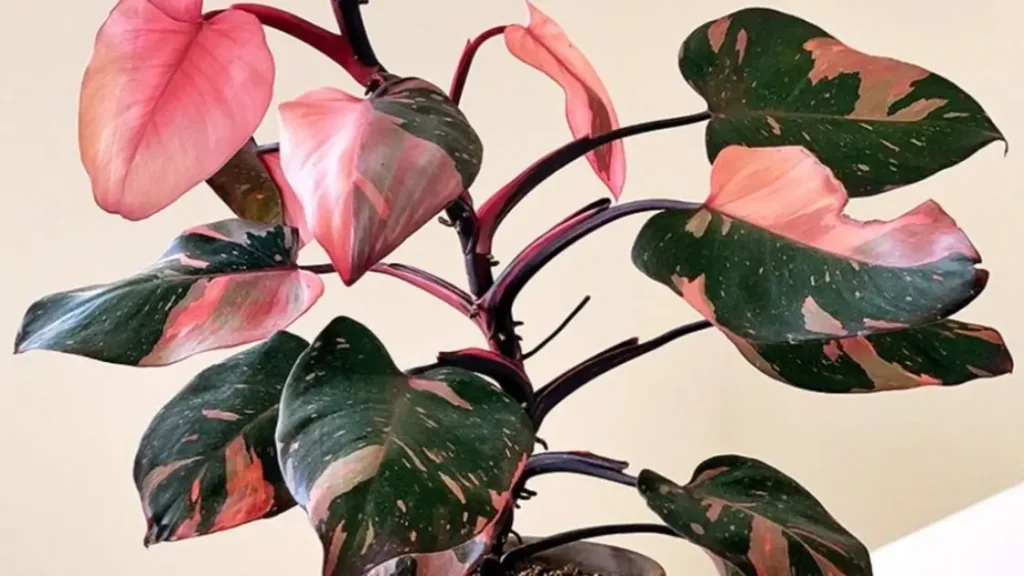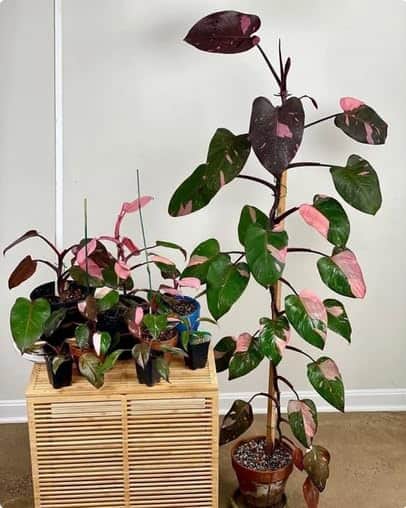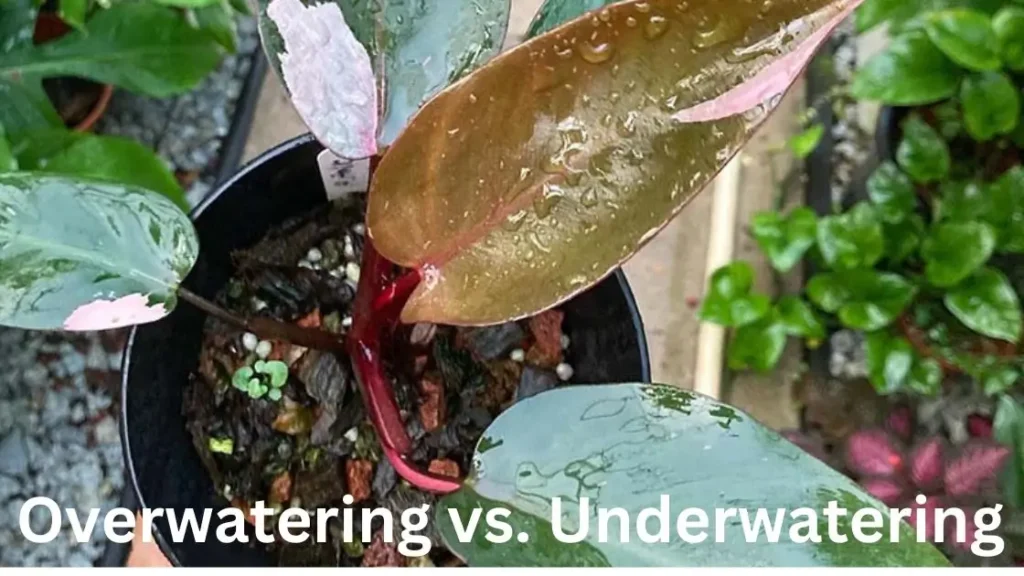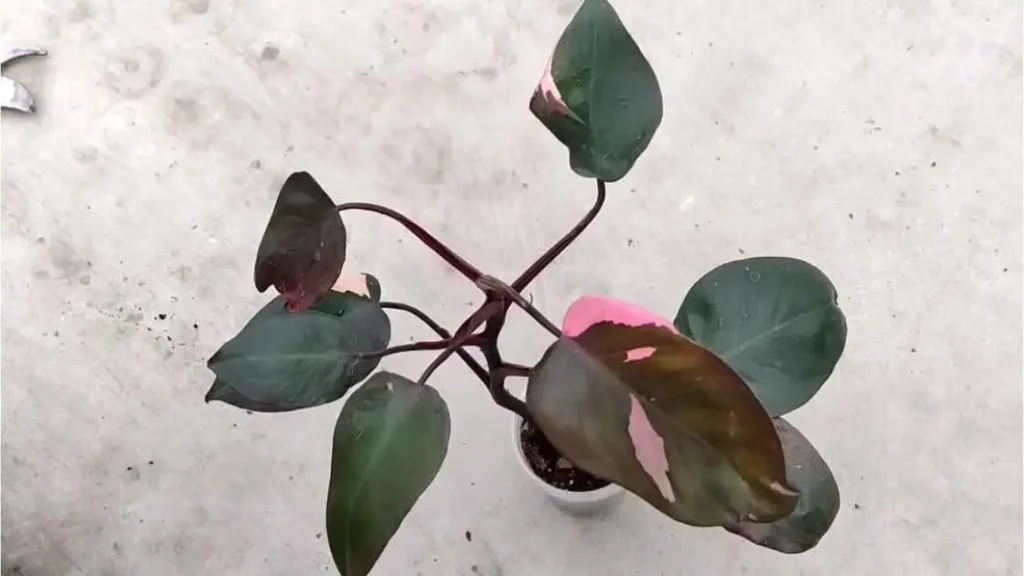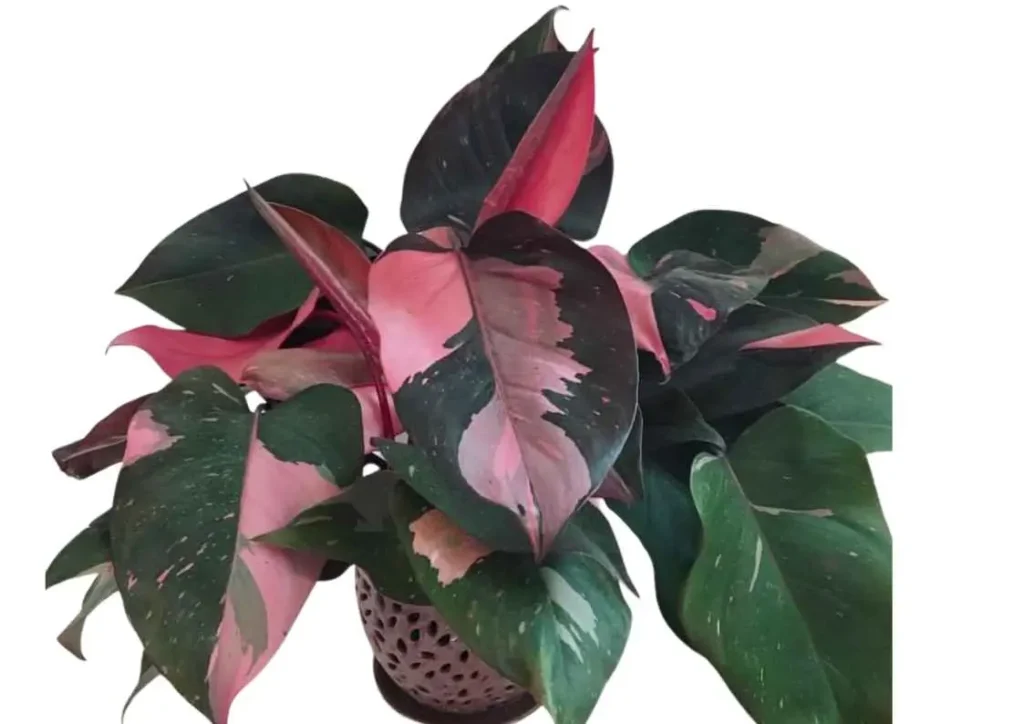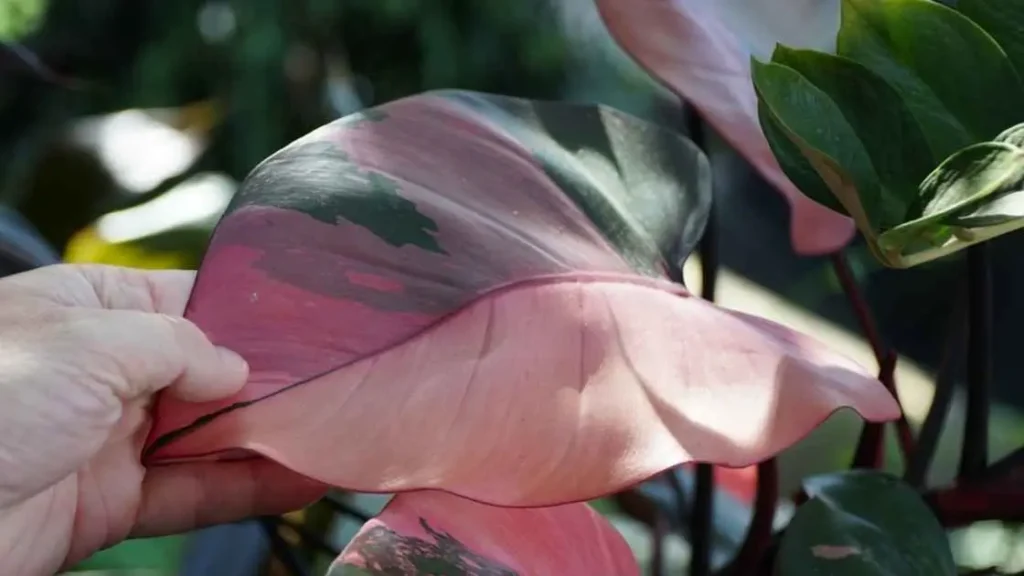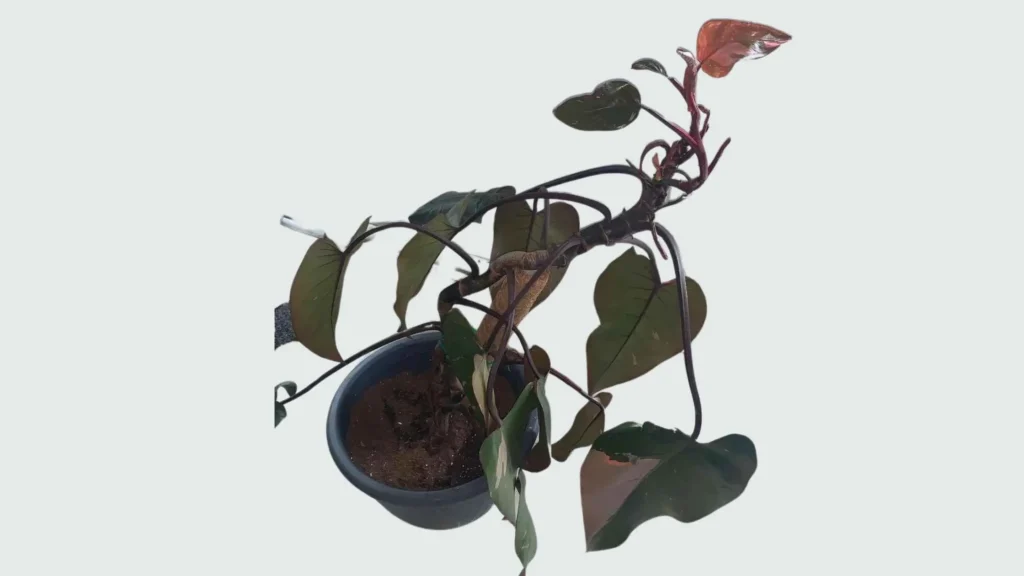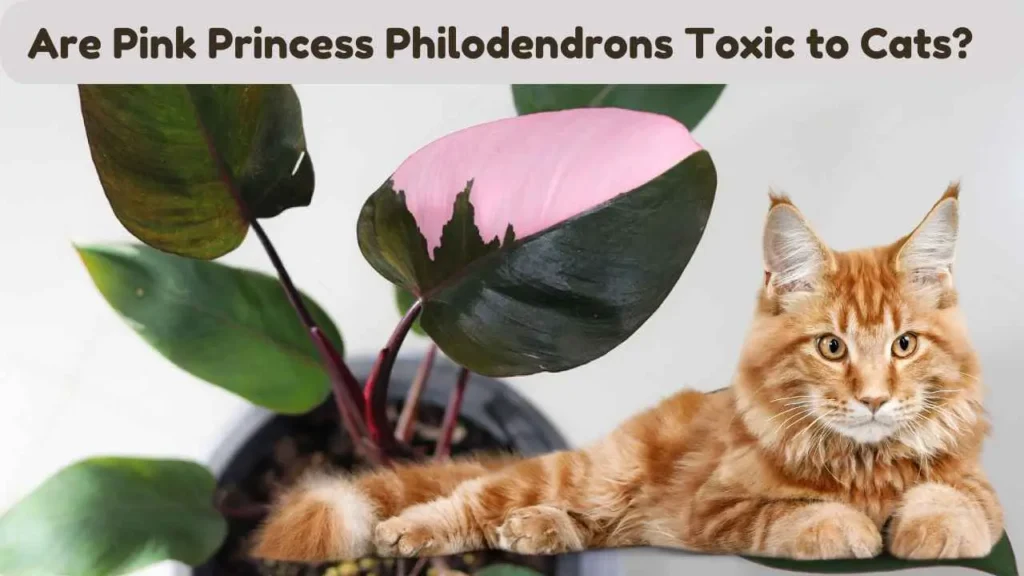Table of Contents
ToggleI’ve always been a fan of houseplants, especially those with striking colors like the Pink Princess Philodendron. Their beautiful pink and green leaves can brighten up any room. However, as a cat owner, I soon discovered that not all plants are safe for our furry friends. The question that haunted me was: Are Pink Princess Philodendrons toxic to cats?
It turns out, yes, they are. Like many philodendrons, Pink Princess contains calcium oxalate crystals, which can cause severe discomfort and health issues in cats if ingested. Understanding the risks and symptoms of plant toxicity is crucial for any pet owner. In this article, I’ll share what I’ve learned about keeping cats safe around toxic plants and suggest some safer alternatives.
What Makes Pink Princess Philodendrons Dangerous for Cats?
Plants like the Pink Princess Philodendron are popular for their beauty, but they pose hidden dangers to pets. Toxicity in plants often comes from substances designed to deter herbivores. In the case of philodendrons, the culprit is calcium oxalate crystals. These tiny, needle-like crystals can cause severe irritation when ingested, especially to sensitive tissues in the mouth, throat, and digestive tract.
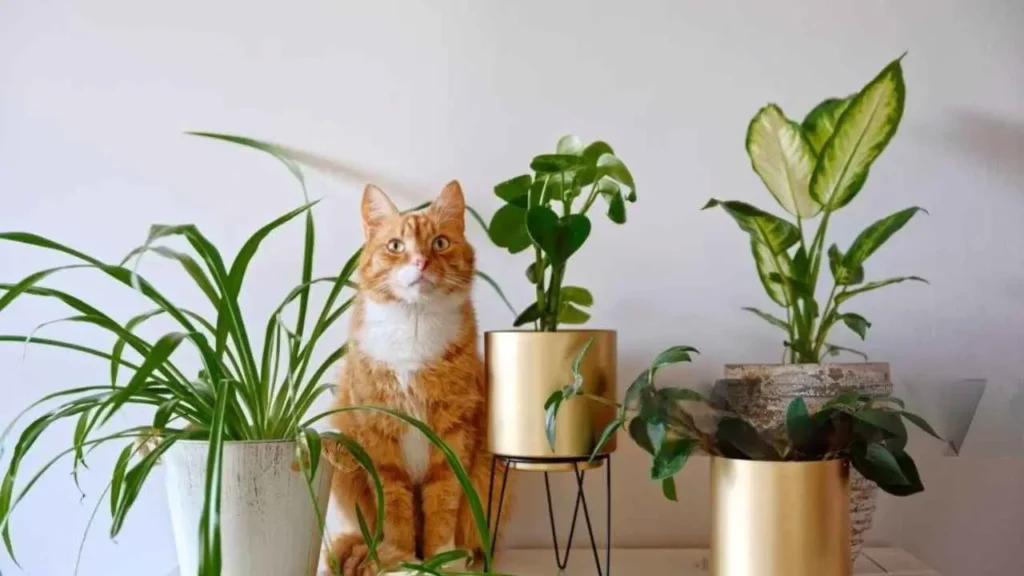
Cats are naturally curious creatures. They might nibble on plants out of boredom, a lack of nutrients, or simply because they enjoy the texture. Unfortunately, ingesting even a small amount of Pink Princess Philodendron can lead to significant discomfort. Symptoms include drooling, vomiting, and difficulty swallowing, which can be distressing for both the cat and the owner.
To keep our pets safe, it’s essential to be aware of the toxic plants in our homes and understand how to prevent exposure. This awareness includes knowing what symptoms to look for and how to respond if an incident occurs.
Are Pink Princess Philodendrons Toxic to Cats?
Yes, Pink Princess Philodendrons are toxic to cats. The primary toxic agents are insoluble calcium oxalate crystals found in the plant’s leaves and stems. When a cat chews on the plant, these crystals are released and can embed themselves into the soft tissues of the mouth, throat, and digestive tract, causing intense irritation.
Symptoms of poisoning can vary in severity but typically include:
- Oral irritation: You might notice your cat pawing at its mouth or face.
- Drooling: This is often one of the first signs of a problem.
- Vomiting: This can occur shortly after ingestion.
- Difficulty swallowing: Your cat may appear to gag or choke.
- Swelling: Visible swelling of the mouth, tongue, or throat is possible.
In severe cases, a cat may exhibit lethargy, respiratory distress, or even seizures. However, most cases involve mild to moderate symptoms that, while painful, are not life-threatening. It’s still essential to seek veterinary care if you suspect your cat has ingested any part of a Pink Princess Philodendron.
I remember when I first discovered this. My cat, Luna, had developed an unusual fascination with my plants. One day, I found her drooling excessively and immediately knew something was wrong. After a frantic trip to the vet, I learned about the toxicity of my beloved Pink Princess. Fortunately, Luna recovered quickly, but it was a stark reminder of the hidden dangers that certain houseplants can pose to pets.
Symptoms of Pink Princess Philodendron Poisoning in Cats
Identifying the symptoms of Pink Princess Philodendron poisoning early can make a significant difference in your cat’s recovery. Here are some signs to watch out for:
- Drooling and Foaming: These are often the first indicators. If your cat is drooling excessively or if the drool turns to foam, it’s a clear sign of oral irritation.
- Vomiting: This can happen shortly after ingestion as your cat’s body tries to expel the toxic material.
- Difficulty Swallowing: Your cat may gag, choke, or refuse to eat or drink.
- Pawing at the Mouth: This is a common reaction to the irritation caused by the plant’s crystals.
- Blisters and Swelling: Look for blisters in and around the mouth and noticeable swelling of the mouth, tongue, and throat.
- Lethargy: A poisoned cat might become unusually tired and less active.
- Respiratory Distress: In severe cases, you might notice labored breathing, wheezing, or coughing.
It’s crucial to act quickly if you observe these symptoms. While most cases aren’t fatal, they require prompt attention to prevent further complications.
When Luna had her encounter with the Pink Princess Philodendron, she exhibited many of these symptoms. She started drooling excessively and later began vomiting. Recognizing the symptoms early allowed me to get her the help she needed quickly.
What to Do if Your Cat Ingests a Pink Princess Philodendron
If you suspect your cat has ingested any part of a Pink Princess Philodendron, here’s what you should do immediately:
- Remove the Plant: Take the plant out of reach to prevent further ingestion.
- Rinse the Mouth: Gently rinse your cat’s mouth with water to remove any plant residue. Be careful and gentle to avoid causing more distress.
- Feed Dairy Products: Offer your cat some milk or yogurt. These can help bind to the calcium oxalate crystals and reduce irritation.
- Contact Your Vet: Call your veterinarian right away for advice. They might ask you to bring your cat in for an examination.
In Luna’s case, rinsing her mouth and getting her to the vet quickly made a significant difference. The vet was able to provide treatment that eased her symptoms and prevented more severe complications.
Veterinary care may include medications to alleviate pain and reduce swelling. In some cases, your vet might prescribe a medication containing calcium to neutralize the oxalate crystals. If your cat has severe symptoms, such as difficulty breathing or extreme lethargy, they may need to stay at the clinic for observation and supportive care.
Preventing Exposure to Pink Princess Philodendrons
Prevention is always better than cure. Here are some effective ways to keep your cat safe from toxic plants like the Pink Princess Philodendron:
- Keep Plants Out of Reach: Place plants in areas that your cat can’t access. Hanging baskets and high shelves can be useful.
- Use Deterrents: Pet-friendly deterrent sprays can discourage your cat from approaching the plant. Citrus-scented sprays are often effective.
- Provide Safe Alternatives: Give your cat safe plants to chew on, such as cat grass or catnip. This can satisfy their curiosity and reduce the likelihood of them eating toxic plants.
- Supervise Outdoor Access: If your cat goes outside, supervise them to prevent them from encountering toxic plants in the garden.
Since that scary incident with Luna, I’ve taken steps to cat-proof my plant collection. I moved my Pink Princess Philodendron to a high shelf and introduced more cat-safe plants into my home.
Safe Plant Alternatives for Cat Owners
If you love having plants around but want to ensure your cat’s safety, consider these non-toxic alternatives:
- Spider Plant (Chlorophytum comosum): These are easy to care for and safe for cats. Plus, they help purify the air.
- Boston Fern (Nephrolepis exaltata): This lush, green plant is both beautiful and non-toxic.
- Areca Palm (Dypsis lutescens): Adds a tropical feel to your home without posing a risk to your cat.
- Money Plant (Epipremnum aureum): Also known as Devil’s Ivy, this plant is easy to care for and safe for cats.
- African Violets (Saintpaulia): These flowering plants come in various colors and are non-toxic to cats.
These alternatives not only keep your home looking beautiful but also ensure the safety of your feline friends. After Luna’s ordeal, I replaced several of my plants with these safer options, and it’s been a relief knowing she can roam freely without the risk of poisoning.
Ensuring a Healthy Environment for Cats
Creating a safe and healthy environment for your cat goes beyond just choosing the right plants. Here are some additional tips:
- Proper Nutrition: Ensure your cat is getting a balanced diet. Sometimes, cats chew on plants because they’re missing certain nutrients.
- Regular Veterinary Check-ups: Regular vet visits can help catch any health issues early.
- Provide Enrichment: Keep your cat entertained with toys, scratching posts, and safe plants like cat grass.
- Hydration: Always have fresh water available. Proper hydration can help prevent many health issues.
Since making these changes, Luna has been happier and healthier. Providing a safe environment means fewer worries about accidental poisoning and more peace of mind for both of us.
Conclusion
Living with both plants and cats can be challenging, but it’s entirely possible to create a safe environment for both. Are Pink Princess Philodendrons toxic to cats? Yes, they are, but with the right precautions and awareness, you can keep your furry friends safe.
From my experience with Luna, I learned the importance of understanding plant toxicity and taking proactive steps to prevent exposure. By choosing non-toxic plants and being vigilant about your cat’s environment, you can enjoy a beautiful indoor garden without putting your pets at risk.
Remember, the key to a harmonious home is balance. Ensure your plants and pets coexist peacefully by staying informed and prepared. If you ever find yourself in a situation where your cat has ingested a toxic plant, don’t hesitate to seek veterinary care immediately. Your quick response can make all the difference in ensuring your cat’s health and safety.
FAQs
What should I do if my cat eats a Pink Princess Philodendron?
If your cat eats a Pink Princess Philodendron, rinse its mouth with water, offer milk or yogurt, and contact your vet immediately.
Are all Philodendrons toxic to cats?
Yes, most Philodendrons contain calcium oxalate crystals, which are toxic to cats. It’s best to avoid having these plants if you have pets.
Can a Pink Princess Philodendron kill my cat?
It’s highly unlikely. While Pink Princess Philodendron can cause significant discomfort and health issues, it is not typically fatal. However, severe cases can lead to serious health problems if not treated promptly, so immediate veterinary attention is essential.
What are some non-toxic plants for homes with cats?
Some great non-toxic alternatives include Spider Plants, Boston Ferns, Areca Palms, Money Plants, and African Violets. These plants are safe for cats and can still provide a beautiful and vibrant indoor garden.
Why do cats eat houseplants?
Cats might eat houseplants due to boredom, nutritional deficiencies, or simply curiosity. Providing safe plants like cat grass can help satisfy their need to chew and explore.
How can I keep my cat away from toxic plants?
Use pet-friendly deterrent sprays, place plants out of reach, and provide safe alternatives like cat grass. Supervising your cat’s outdoor access and keeping toxic plants out of your home are also effective measures.
Related
Discover more from Pink Philodendron
Subscribe to get the latest posts sent to your email.

